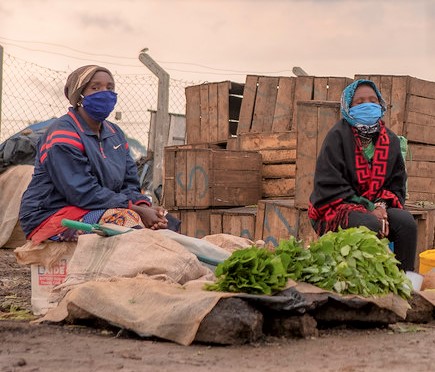COVID-19 High Frequency Phone Surveys 2021 - LAC HFPS Harmonized Dataset
Brazil, 2021
Get MicrodataIdentification
BRA_2021_HFPS_v02_M_v01_A_H
COVID-19 High Frequency Phone Surveys 2021 - LAC HFPS Harmonized Dataset
| Name | Country code |
|---|---|
| Brazil | BRA |
Socio-Economic/Monitoring Survey [hh/sems]
The survey is part of the LAC: COVID-19 High Frequency Monitoring Project (P175839) and was conducted under the Brazil Poverty and Equity Program (P177527)
The Brazil 2021 COVID-19 Phone Survey was conducted to provide information on how the pandemic had been affecting Brazilian households in 2021, collecting information along multiple dimensions relevant to the welfare of the population (e.g. changes in employment and income, coping mechanisms, access to health and education services, gender inequalities, and food insecurity). A total of 2,166 phone interviews were conducted across all Brazilian states between July 26 and October 1, 2021. The survey followed an Random Digit Dialing (RDD) sampling methodology using a dual sampling frame of cellphone and landline numbers. The sampling frame was stratified by type of phone and state. Results are nationally representative for households with a landline or at least one cell phone and of individuals of ages 18 years and above who have an active cell phone number or a landline at home.
Households and individuals of 18 years of age and older.
Scope
The LAC-HFPS team has created a harmonized Brazil database to facilitate comparisons with the High-Frequency Surveys collected in 2021 in the LAC region. The databases follow the same structure as those in the COVID-19 LAC High Frequency Phone Surveys 2021 (Wave 1) project.
The survey gathered information on food insecurity, changes in employment, income loss, access to health services and education, gender issues, access to digital and banking services and coping mechanisms. Eligible respondents were adults 18 years old and above. Only one respondent per household was interviewed, and she answered both individual and household-level questions. Questions on access to education services for a randomly selected school-age (6-17 years old) child were also answered by the respondent.
Coverage
National level.
Producers and sponsors
| Name | Affiliation |
|---|---|
| Gabriel Lara Ibarra | World Bank Group |
| Anna Luisa Paffhausen | World Bank Group |
| Ricardo Campante Cardoso Vale | World Bank Group |
| Carolina Mejia-Mantilla | World Bank Group |
| Adriana Camacho | United Nations Development Programme |
| Javier Romero | World Bank Group |
| Name | Affiliation | Role |
|---|---|---|
| Oppen Social | Private vendor | Survey collection |
Sampling
The sample is based on a dual frame of cell phone and landline numbers that was generated through a Random Digit Dialing (RDD) process and consisted of all possible phone numbers under the national phone numbering plan. Numbers were screened through an automated process to identify active numbers and cross-checked with business registries to identify business numbers not eligible for the survey. This method ensures coverage of all landline and cellphone numbers active at the time of the survey. The sampling frame was stratified by type of phone and state. See Sampling Design and Weighting document for more detail.
The survey has two sample units: households and individuals. Sampling weights were computed for each unit and should be used according to the estimate of interest. The weighting process involved the following steps:
- Calculation of the inclusion probabilities of landline and cell phone numbers, including automatic adjustment for non-response.
- Computation of base weights for households and individuals.
- Calibration of individual and household weights, using external data from official sources (adjusted for the national phone coverage).
The survey included a child module that was administered for one random eligible child selected in each household. In this case the child weight is equal to the household weight multiplied by the number of eligible children in the household.
See Sampling Design and Weighting document for more detail.
Survey instrument
Available in Portuguese. The questionnaire followed closely the LAC HFPS Questionnaire of Phase II Wave I but had some critical variations.
Data collection
| Start | End | Cycle |
|---|---|---|
| 2021/07/26 | 2021/10/01 | Wave 1 |
- Computer Assisted Telephone Interview [cati]
Supervision was carried out jointly by the Data collection vendor and the Brazil Poverty team.
Data Access
| Name | Affiliation |
|---|---|
| Gabriel Lara Ibarra | Senior Economist ELCPV |
| Anna Luisa Paffhausen | Economist ELCPV |
| Carolina Mejia-Mantilla | Senior Economist ELCPV |
World Bank and UNDP (2022). Brazil - Covid-19 High-Frequency Phone Surveys (HFPS) 2021 - LAC HFPS Harmonized Dataset, Wave 1. Ref: BRA_2021_HFPS_v02_M_v01_A_H. Washington DC. Dataset downloaded from [url] on [date]
Disclaimer and copyrights
The user of the data acknowledges that the original collector of the data, the authorized distributor of the data, and the relevant funding agency bear no responsibility for use of the data or for interpretations or inferences based upon such uses.
Contacts
| Name | Affiliation | |
|---|---|---|
| Gabriel Lara Ibarra | Senior Economist ELCPV | glaraibarra@worldbank.org |
| Anna Luisa Paffhausen | Economist ELCPV | apaffhausen@worldbank.org |
| Carolina Mejia-Mantilla | Senior Economist ELCPV | cmejiamantilla@worldbank.org |
Metadata production
BRA_2021_HFPS_v02_M_v01_A_H
| Name | Affiliation | Role |
|---|---|---|
| Poverty Reduction and Policy Management Network (PREM) | World Bank | Metadata and data deposit |
| Development Data Group | World Bank | Documentation of the study |
2022-07-22
Metadata version
Version 01 (2022-07-22)
